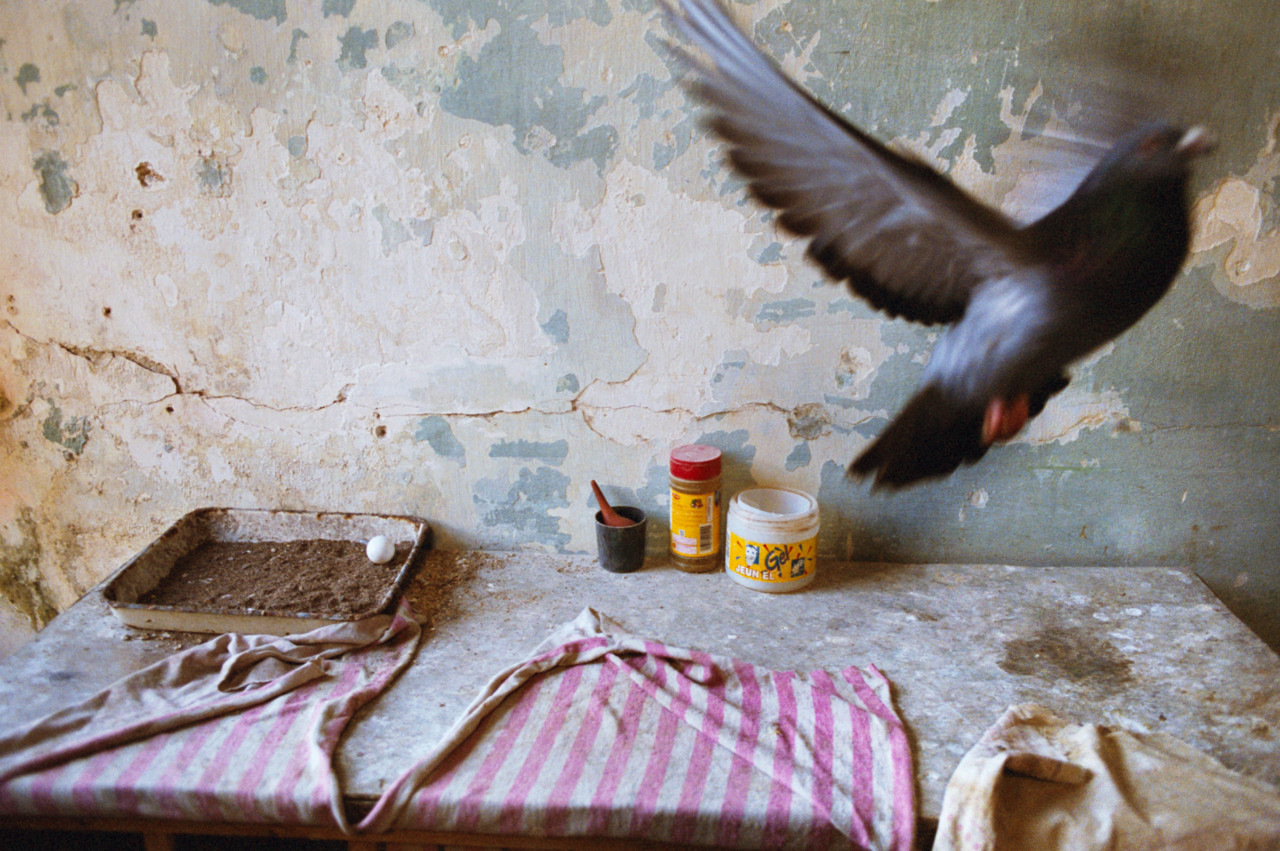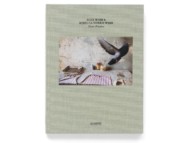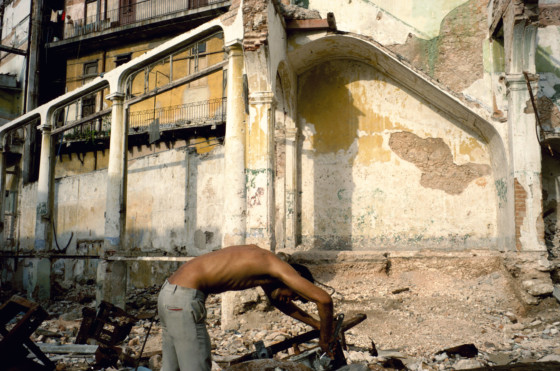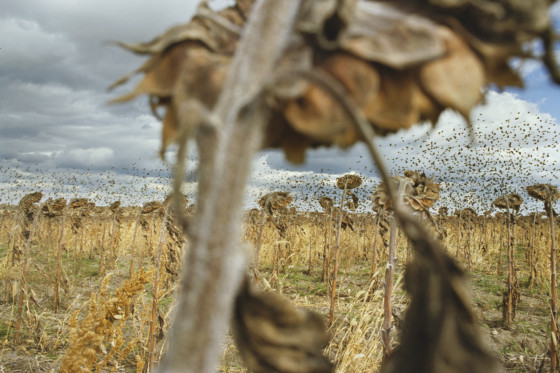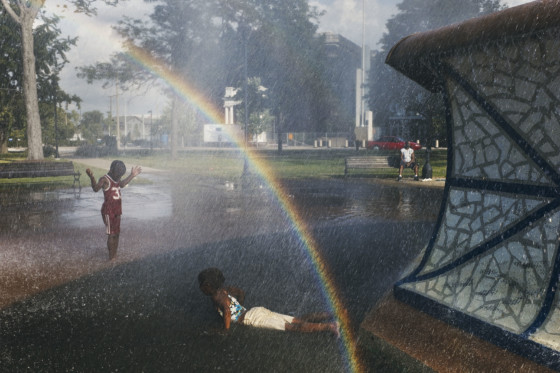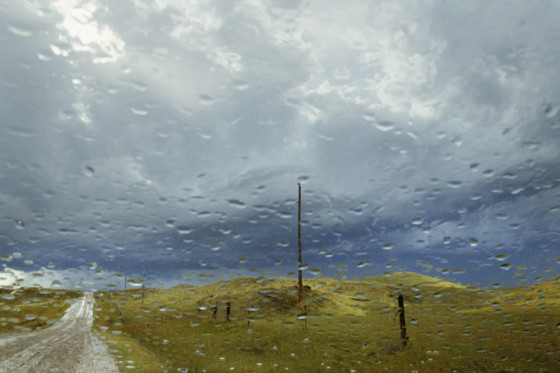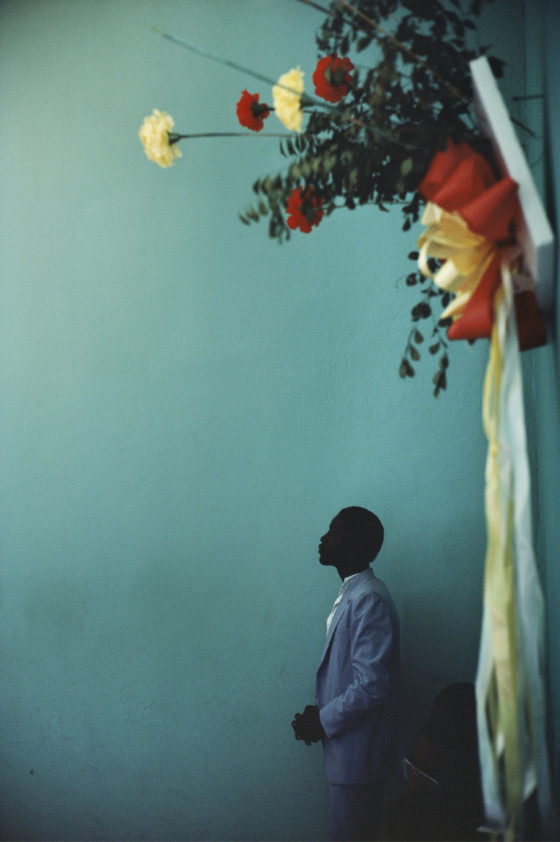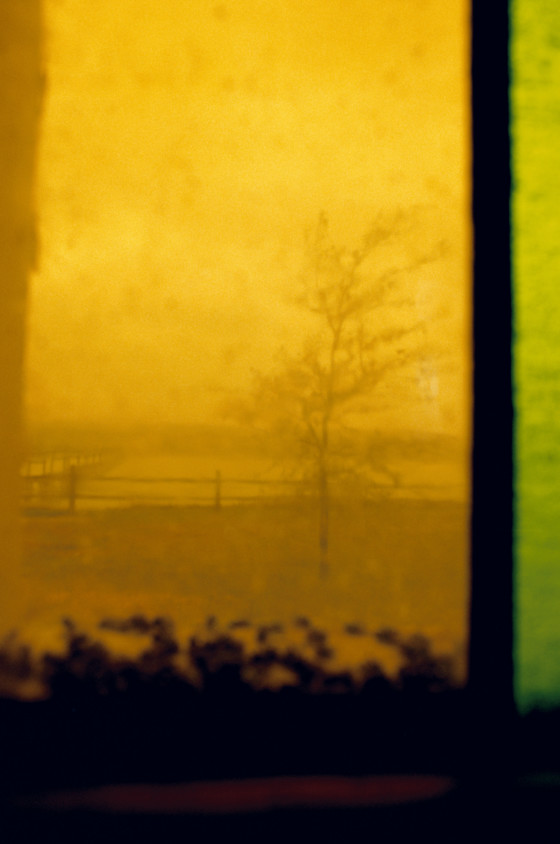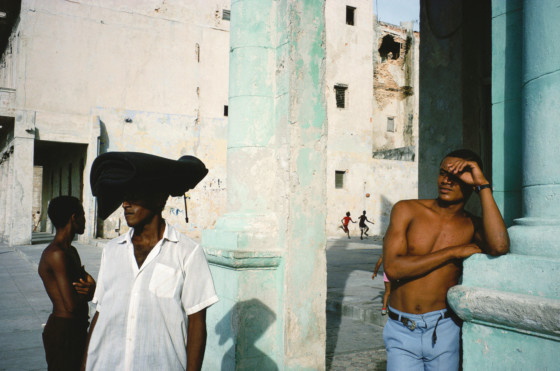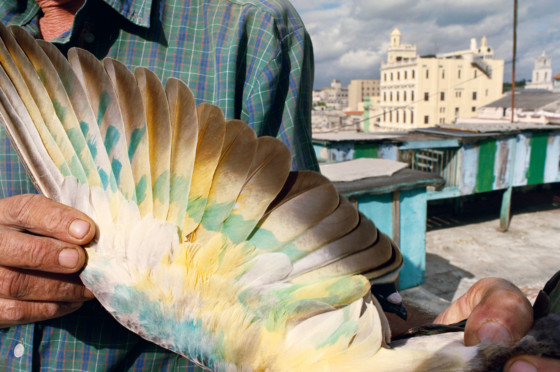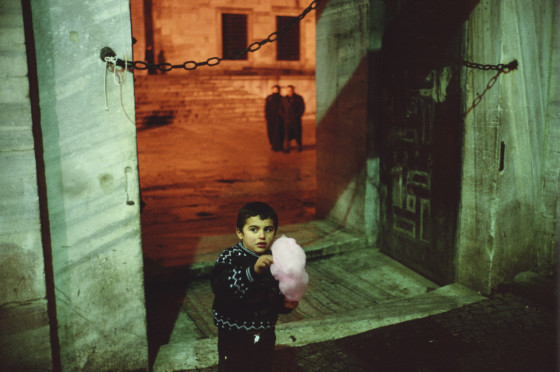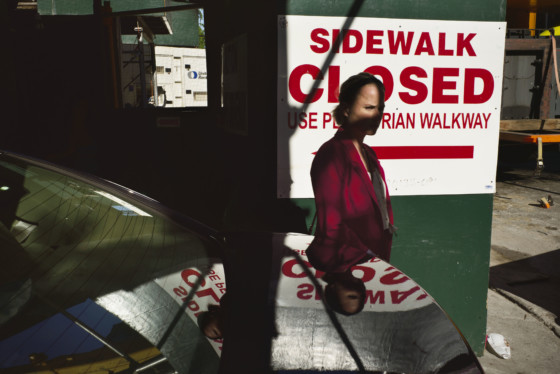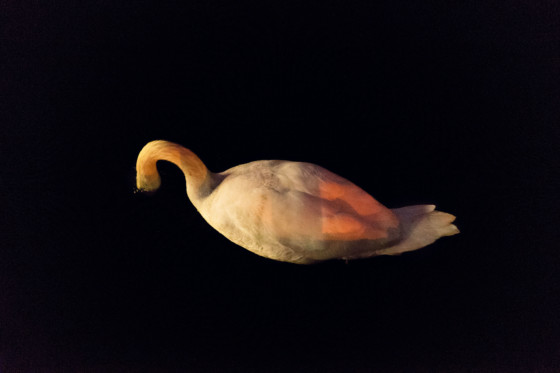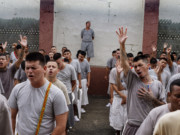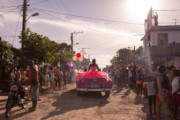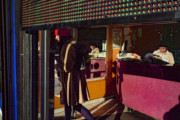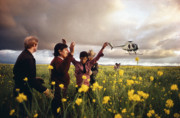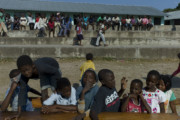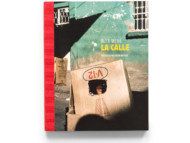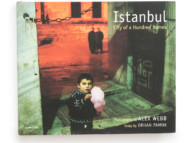Slant Rhymes is a photographic conversation between Alex Webb and poet and photographer Rebecca Norris Webb. Selected from photographs taken during the Webbs’ nearly 30-year friendship and later marriage and creative partnership, this group of 80 photographs are paired—one by Alex, one by Rebecca—to create a series of visual rhymes that talk to one another, often at a slant and in intriguing and revealing ways.
“Sometimes we find our photographic slant rhymes share a similar palette or tone or geometry”, writes Alex Webb in the introduction to the book. “Other times, our paired photographs strike a similar note—often a penchant for surreal or surprising or enigmatic moments—although often in two different keys. ”
The resultant book is an unfinished love poem, told at a slant. Here, the pair discuss their joint work in tandem, their poetically echoing images, presented side by side as in the book.
As a creative partnership, what do you both appreciate most about what the other brought to the creative union of Slant Rhymes?
Alex Webb (AW): I particularly appreciate the special poetic sensibility that Rebecca brings to our collaborations, not only with her photography and writing, but also with her bookmaking, in which she often structures books as if they were visual poems. This latter talent was instrumental in the making of Slant Rhymes, because this collaborative book is so clearly about how our paired photographs and text pieces speak to one another, and also—analogously—how we relate to one another.
Rebecca Norris Webb (RNW): Alex brings the sheer virtuosity and soulfulness of his seeing, and, as a collaborator, the questioning nature and generosity of his being.
Why did you choose a poetic term, Slant Rhymes, as the title of this book? And could you talk more about the relationship between photography and poetry?
AW: A slant rhyme in poetry is a near rhyme, like the paired words “eyes” and “light,” or “blue” and “moon.” Rebecca and I first realized this special relationship between our photographs while laying out our Cuba book, Violet Isle, ten years ago. We discovered that sometimes our photographs talk to one another in interesting and surprising ways, creating different kinds of meanings and, ultimately, a more layered portrait of the island of Cuba. Rebecca and I continued to play with this notion in our joint book, Memory City, on time, film, memory, and the city of Rochester, New York, itself, the long-time home of Kodak, during the year following the company’s declared bankruptcy.
RNW: I consider poetry and photography sister arts. Both share a preoccupation with light and time, the fleeting moment and the resonant image. Both poetry and photography are better at suggesting than explaining, which is their limitation—as well as their strength.
Rebecca, as a poet first, how did you come to photography?
RNW: Originally a poet, I found my writing abandoned me after college. My response was to buy a used camera and travel, hoping my photographs would inspire my poetry when I returned. Instead, I fell in love with photography. I realized that the eye focusing on those images in my poetry was the same eye looking through the lens. I think Wright Morris, the writer and photographer, said it best: “I don’t give up the camera eye when I write, merely the camera.”
Rebecca, you write to the photographs, or do you write throughout your travels, and then see what photographs they resonate with (or create slant rhymes with, to borrow your own phraseology)?
RNW: Occasionally I write directly to a photograph. More often than not, both forms are independent entities, with their own creative rhythms. My photography tends to lead the way, most notably with My Dakota, when one of my responses to the unexpected death of my brother was writer’s block. Eventually, when my writing returned near the end of the project, I discovered that I was writing about the same images—apples, prairies, wave patterns—that I’d been repeatedly photographing since my brother’s death. It was as if the images in my photography were slowly showing me how to write about loss.
For the most part, it’s only well into a project that I begin to bring together my writing and my photography during the editing and sequencing process, pairing a text piece with an image that resonates with it in some way, often at a slant.
Alex, what is relationship between literature and reportage, both within your own work and the work that has inspired you?
AW: As a literature major in college—and someone who’d once toyed with idea of writing fiction—literature has long been key to my photography. Many of my books have been inspired in part by literature—with Under a Grudging Sun, Graham Greene’s The Comedians; with La Calle, Octavio Paz’s The Labyrinth of Solitude; and, with Amazon, Gabriel García Márquez’s One Hundred Years of Solitude and Mario Vargas LLosa’s The Green House.
Alex, in a previous interview you discuss how your first introduction to the greats of photography was through books. Why is a book, and particularly this way of formatting and creating a book, the right vehicle for this particular body of work?
AW: Of all the visual arts. photography is uniquely suited to the book form. A book does not do justice to the three dimensionality of sculpture, nor the plasticity of painting, whereas a well-printed book—while not perfect—can do a very good job of reproducing photographic work. Also, I find the sequencing and structure of photographic books to be very exciting. As much as I appreciate individual prints on the wall, I like the way in which a book can guide the viewer through a body of work—as well as how the book lives on in time, compared with the transience of an exhibition.
For Slant Rhymes, I especially love how the design echoes a poetry book, with its intimate size and tipped-in photograph on the cover.
Alex and Rebecca, while you first saw the works of the photography greats in the pages of books, young people today are most likely to come across them on screens. As two people who often teach young, aspiring photographers, how do you suppose their experience of being introduced to photography is going to influence the creative ways in which they present their work?
AW: Interestingly enough, although more and more photographs are being seen on screens, more and more serious photographic books are being produced. However, they’re not necessarily being made by traditional publishers, but by small presses and by photographers themselves, through self-publishing. It’s as if the lack of tangibility in the virtual photographic world has led to a greater need for the tactile experience of holding a physical object—a book—in one’s hands. And so in our teaching—especially in our bookmaking workshops—we rely heavily on the tangible, insisting that some of the images we work with be prints, not just digital files.
RNW: It was only two years ago that Alex and I traded in our flip phones for smartphones. Since I often interweave text and images in my work, I immediately began experimenting with Instagram, posting the first series of our slant rhymes—one of Alex’s photographs paired with one of mine, sometimes with accompanying text—on our new joint IG account. A few months later, La Fábrica invited us to do a book with them, and we suggested Slant Rhymes. So, Instagram ended up being a kind of virtual sketchbook for us. In part, we have Instagram to thank for inspiring what eventually became an analog book.
I’m looking forward to seeing how other photographers creatively engage with social media, especially the younger generation of photographers.
Buy ‘Slant Rhymes’ on the Magnum Shop.


